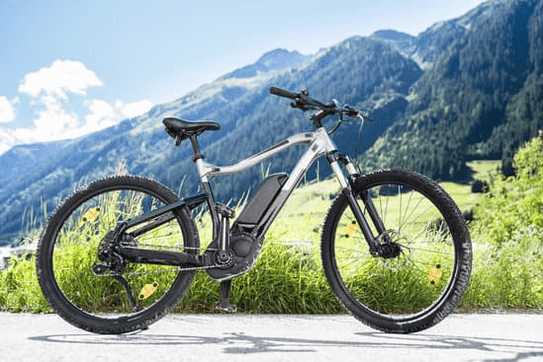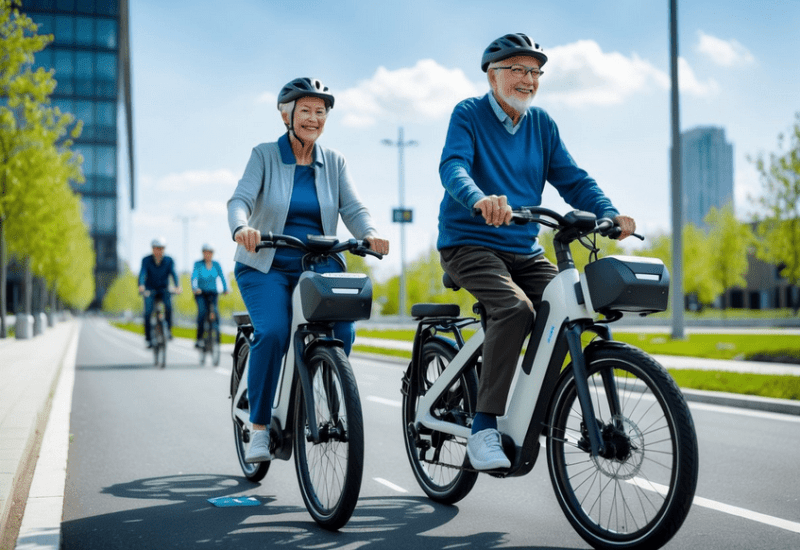E-Bike vs. Regular: The Key Differences
Power through Pedals: Understanding the Mechanics of E-Bikes and Regular Bikes
Regarding transportation and exercise, few options are as reliable and efficient as a bike. However, with the rise of e-bikes, you may wonder what the difference is between a regular bike and an electric one. One of the most significant differences lies in the mechanics of the pedals.
Regular bikes rely solely on the power generated by the rider. As you push down on the pedals, the chain transfers this movement to the gears, which spin the bike’s wheels. The harder you pedal, the faster you go. The gearing system allows riders to adjust the resistance and speed of the bike, making it easier to pedal uphill or pick up speed on flat terrain.
In contrast, e-bikes are partially powered by a battery-operated motor, which takes some effort out of pedaling. When you pedal an e-bike, the motor kicks in to multiply the force you’re generating with the pedals. This is especially helpful when going uphill, against a headwind, or carrying a heavy load.
While e-bikes may sound like they make riding a bike “cheating,” they still require significant pedaling effort. The motor assist is capped at a certain speed or level of resistance, so you still have to work to maintain a steady pace. Additionally, e-bikes still need to be pedaled to move, meaning you get the health and fitness benefits of regular cycling while enjoying the convenience of an electric boost.
In summary, the mechanics of pedals on e-bikes and regular bikes differ because e-bikes have an additional motor providing some extra power. However, both types of bikes require pedaling to move and offer their unique advantages and challenges to cyclists. Regardless of bike type, the simple act of pedaling can bring you endless joy, fitness, and adventure.
 Speed, Range, and Performance: A Comparative Analysis of E-Bikes and Regular Bikes
Speed, Range, and Performance: A Comparative Analysis of E-Bikes and Regular Bikes
Regarding cycling, there are two main types of bikes: regular bikes and e-bikes. Regular bikes are the type that most people are familiar with, while e-bikes are relatively new to the scene. Although both types of bikes can be used for transportation and recreation, they differ in speed, range, and performance.
Speed: E-bikes are generally faster than regular bikes. This is because they have an electric motor that assists the rider. E-bikes can reach up to 28 miles per hour, while regular bikes typically have a maximum speed of around 20 miles per hour. The electric motor also makes it easier to maintain a steady speed, especially uphill or against strong winds.
Range: An e-bike's range is determined by its battery capacity. Most e-bikes can travel between 20-50 miles on a single charge, depending on the terrain, rider weight, and level of assistance used. Regular bikes, on the other hand, rely solely on the rider's pedaling power and can travel for an indefinite distance as long as the rider has the energy to do so.
Performance: E-bikes are designed to provide a smoother, more comfortable ride. The electric motor minimizes the effort required to pedal, reducing the strain on the rider's legs and allowing them to cycle longer. E-bikes also come with adjustable power-assist settings that allow riders to tailor the level of assistance to their needs. Regular bikes require more physical effort from the rider, which can be challenging for those not used to cycling or with physical limitations.
In summary, e-bikes have a distinct advantage over regular bikes regarding speed, range, and performance. They are an excellent choice for commuters who want a faster and less strenuous ride and recreational cyclists who want to explore further afield without worrying about running out of steam. However, regular bikes remain a popular choice for those who enjoy the challenge of relying solely on their physical abilities. Ultimately, the choice comes down to personal preference and how the bike will be used.
Sustainability and Fitness: Weighing the Benefits and Drawbacks of E-Bikes and Regular Bikes
When choosing between an e-bike and a regular bike, there are many factors to consider. One of the most important factors is sustainability. E-bikes have gained popularity recently due to their convenience and efficiency, but are they more sustainable than regular bikes?
Sustainability Benefits of Regular Bikes
Regular bikes have been used for transportation for centuries, and good reason. They are a sustainable mode of transportation that doesn't produce harmful emissions. Regular bikes also require minimal resources to manufacture and maintain, making them a great option for reducing their carbon footprint.
In addition to being sustainable for the environment, regular bikes are also great for physical fitness. Riding a bike is a great cardiovascular workout that can burn calories and build strength. Regular biking can also promote mental wellness and reduce stress.
E-Bikes: Sustainable or Not?
E-bikes are becoming increasingly popular due to their convenience and efficiency. They are equipped with an electric motor that assists with pedaling and can make cycling easier, especially on hills.
E-bikes, however, require more resources to manufacture than regular bikes due to the electric motor and battery. The battery must also be replaced every few years, contributing to e-bikes' environmental impact.
Despite these drawbacks, e-bikes can still be a sustainable option for transportation. E-bikes reduce the gas used for transportation and contribute to a healthier environment. E-bikes can also be used by people who may not be able to ride regular bikes due to injuries, disabilities or simply age-related physical limitations.
Which is the Better Option?
The answer to this question ultimately depends on the individual's needs and preferences. Regular bikes are a sustainable option for those looking to reduce their carbon footprint and maintain physical fitness. E-bikes, while not as sustainable as regular bikes, can still be a better option for those who need assistance with pedaling or have physical limitations.
Both regular bikes and e-bikes have benefits and drawbacks regarding sustainability and fitness. The most important thing is choosing the best option for the individual's lifestyle and needs.
SAFETY WARNING
When using our electric bikes, please follow these key safety rules:
1. Helmet: Always wear a helmet.
2. Visibility: Use bright, reflective gear and bike lights.
3. Road Rules: Follow all traffic laws and signals.
4. Speed: Manage your speed based on conditions.
5. Maintenance: Keep your bike in good shape.
6. Skills: Know your abilities and bike handling.
7. Awareness: Focus on the road and avoid distractions.
Your safety and others depend on you. Ride responsibly!
Please note these rules do not cover all potential hazards or risks. Abide by local laws and regulations regarding electric bikes.
Stay safe and enjoy the ride!
Recent Related Articles:
Electric Biking and the Aging Population: Enhancing Quality of Life
DIY Guide: Conversion of Regular Bike to an Electric Bike
DISCLAIMER
This document is provided for general information purposes only and should not be relied upon as providing legal advice, technical, or specific operational guidance to the reader, whether as to the practices described in the document or the applicable legal requirements and regulations. Just Electric Bikes.Com expressly disclaims any responsibility for liability arising from or related to the use or misuse of any information in this document.




